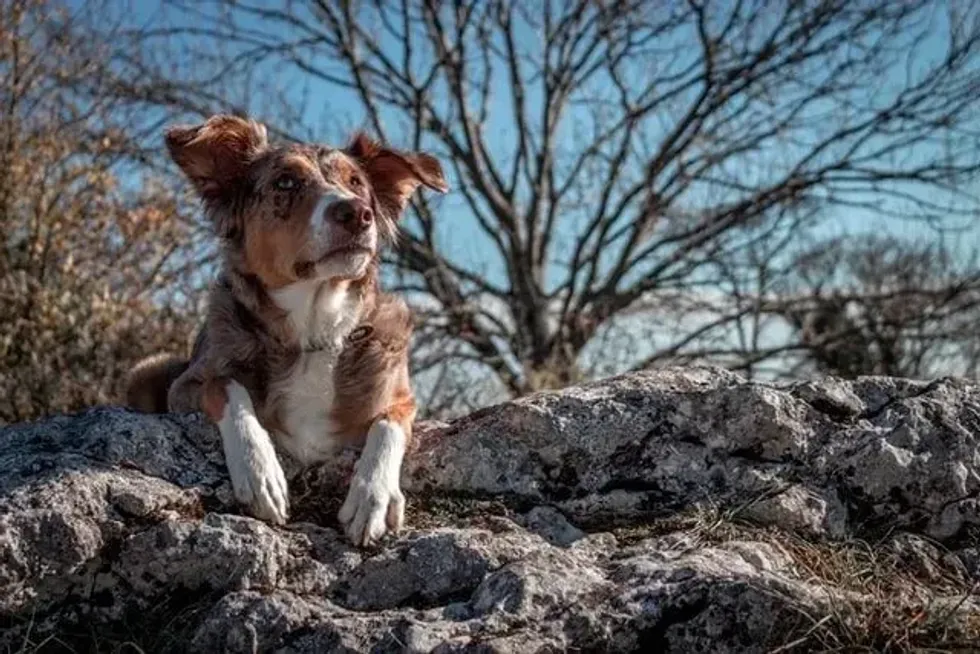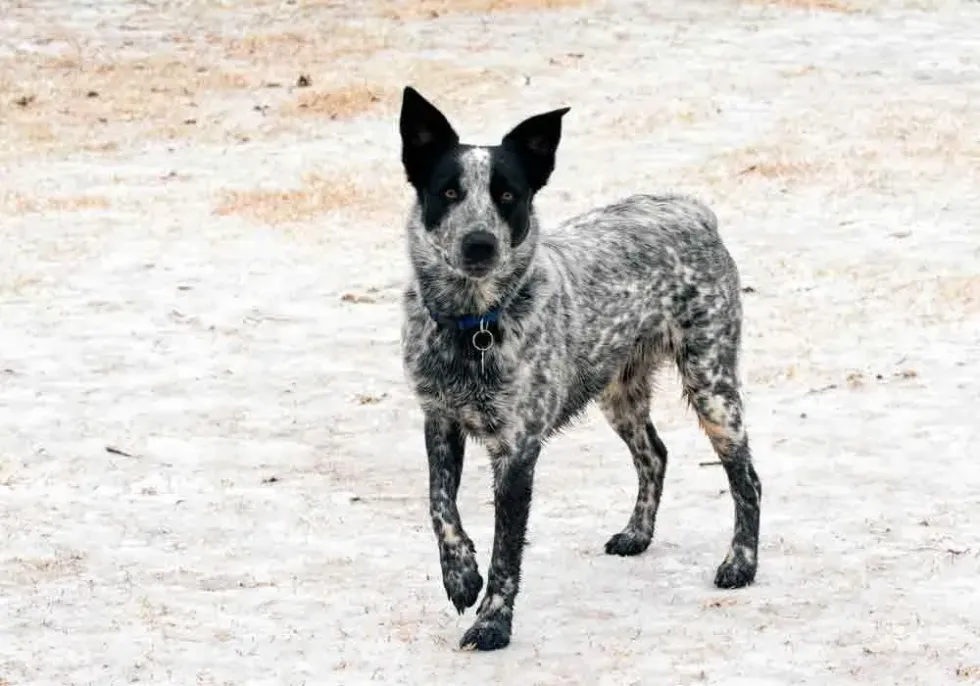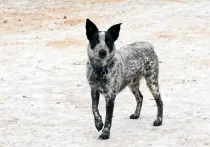Fun Texas Heeler Facts For Kids

Content
- What type of animal is a Texas Heeler?
- What class of animal does a Texas Heeler belong to?
- How many Texas Heelers are there in the world?
- Where does a Texas Heeler live?
- What is a Texas Heeler's habitat?
- Who do Texas Heelers live with?
- How long does a Texas Heeler live?
- How do they reproduce?
- What is their conservation status?
- What do Texas Heelers look like?
- How cute are they?
- How do they communicate?
- How big is a Texas Heeler?
- How fast can a Texas Heeler run?
- How much does a Texas Heeler weigh?
- What are their male and female names of the species?
- What would you call a baby Texas Heeler?
- What do they eat?
- Are they slobbery?
- Would they make a good pet?
- Did you know...
- How does a Texas Heeler's appearance differ?
- How does the Texas Heeler get its name?
Are you a dog lover and want to know about various breeds of dogs? Then you will surely enjoy reading about Texas Heeler.
The Texas Heeler is a crossbreed dog that was originally bred to be herding dogs. Two well-known breeds, the Australian Cattle dog and the Australian Shepherd breed are crossed to get a Texas Heeler.
This Heeler mix breed has amazing herding instincts and is easy to train. It is a breed that is full of energy.
It is loyal, intelligent, friendly, and loves to spend time with its human friends for hours. Texas Heelers need a proper diet plan as a herding or working breed needs to be taken care of properly.
It is also important to keep their weight in check and make them do regular exercise. It is not uncommon for this breed to fall sick and can face issues like Hip Dysplasia, Elbow Dysplasia, Distichiasis, Progressive Retinal Atrophy (PRA), Osteochondritis, Collie Eye Anomaly (CEA), Cataracts, Epilepsy, and Deafness.
The Texas Heeler is a very interesting breed that shares the characteristics of two other adorable breeds. The Texas Heeler size and color depend on the parents.
The origin of the name of this breed is as amusing as the breed itself. If you want to know more about this breed, then keep reading. To find out more about related animals, check out Drever and Czechoslovakian wolfdog.
Texas Heeler Interesting Facts
What type of animal is a Texas Heeler?
The Texas Heeler is a type of mixed-breed dog. The Texas Heeler is bred by crossing two quite well-known dog breeds Australian Cattle Dog and Australian Shepherd dog.
The Texas Heeler is not recognized by most kennel clubs but three kennel clubs Dog Registry of America (DRA), American Canine Hybrid Club (ACHC), Animal Research Foundation (ARF) have recognized this hybrid breed.
What class of animal does a Texas Heeler belong to?
Like every other dog in the world, the Texas Healer belongs to the Mammalia class and Canis genus.
How many Texas Heelers are there in the world?
The Texas Heeler is bred in captivity and generally stays in captivity with breeders or owners. Even though it is inhuman to make a female dog breed frequently, some breeders make that happen to earn more money.
As it is difficult to keep track of dogs in captivity, the exact number of Texas Heelers present in this world is not yet known.
Where does a Texas Heeler live?
Both parents of the Texas Heeler were originally used in the Australian outback for herding cattle. The main purpose to breed this crossbreed was to use them for herding purposes. So a Texas Heeler is generally found in houses with a backyard or a farm in Texas.
What is a Texas Heeler's habitat?
Even though Texas Heelers are medium-sized dogs, an apartment or a flat is not the right place for them. They are mainly working dogs and have extreme energy levels.
They need a lot of exercise and training otherwise it can affect both their mood and health. Temperature is not a major issue for them as they can survive in all most all types of cold and hot weather.
A small to an average-sized yard is the best suited for these active crossbreed dogs as they can roam around freely and exercise properly.
A little-known fact about Texas Heelers is that they are great swimmers and love to swim. So there's nothing better than a yard with an attached swimming pool for them.
Recently, these crossbreeds are found in places other than ranches. Texas Heelers now actively participate in dog sports and rallies so they are often found in special training grounds.
Who do Texas Heelers live with?
Texas Heelers are mostly working dogs and they always tend to have a purpose. Their initial days are spent with breeders and the breeders then sell them off to their owner.
The house of the owner becomes their permanent home and they keep on living with their newfound family members. Texas Heelers can be considered family dogs and generally get along well with children above the ages of 10. However, Texas Heeler cannot live with small pets as chasing small pets away is in their nature.
Texas Heelers, being an intelligent dog breed can be trained to become participants at famous dog sport and shows. They are found to spend a great deal of time with their trainers as well.
How long does a Texas Heeler live?
An average dog lives for about 10-13 years. A Texas Heeler, being a hybrid breed of dog tends to have a longer life and can live a healthy life of 13-15 years. They sure can suffer from some major and minor health issues but most of them are treatable.
How do they reproduce?
The Texas Heeler is a crossbreed with the Australian cattle dog or Border Collie and Australian Shepherd dog or ASD as its parent breed. The temperament and appearance of a Texas Heeler depend on its parents as there is a variety of Australian cattle dogs and Australian Shepherds.
The process of reproduction in the Texas Heeler does not differ much from other dog breeds. A female Texas Heeler has a reproductive cycle consisting of four periods.
The first period basically starts with a female dog attracting a male dog. It lasts for about nine days and is called Proestrus.
At the beginning of the second period which lasts for about 3-11 days, the female is receptive to the male. This period is called the Estrus period. A female does not permit mating when the third period starts and the vulva returns to the average size.
This third period or the Diestrus generally starts on the 14th day. And finally, the last period or Anestrus takes place.
Texas Heeler has a heat period that generally lasts for about six months. After that four to six healthy Texas Heeler puppies are born.
Like most dogs, breeding of Texas Heeler should be done only once a year. If a female is forced to breed frequently by the breeder, it may affect the health of the puppies and the mother.
What is their conservation status?
The Texas Heeler is a relatively new dog breed and is not yet recognized by any major kennel clubs. The International Union for Conservation of Nature or IUCN Red List has not listed its conservation status yet.
So, it can be assumed that there is no immediate threat to this mixed breed's population. Although, the Texas Heeler is known to suffer from a few health issues.
Texas Heeler Fun Facts
What do Texas Heelers look like?
The appearance of this breed of dogs depends on its parent breeds. The Texas Heeler who was originally bred to be a herding dog or a working dog generally has a coat of medium-length of about one to three in.
It is known to have smooth and silky fur. The coat color varies from black, red, blue merle, tan, or even white.
This American Cattle Dog mostly has erected upright ears like the Australian Cattle Dog but folded ears like the Australian Shepherd is not uncommon either. It tends to have big eyes but the shape of the tail varies.
It can either have long tails like the Australian Shepherd or bobbed tails like the Australian Cattle. A Texas Heeler generally has a happy expression.
*Please note this is an image of an Australian Shepherd, one of the parent breeds of Texas Heeler.

How cute are they?
Dogs in general are extremely adorable and cute. Their loyal and friendly behavior makes everyone want to pet them. Texas Heeler being a crossbreed of two individual adorable breeds is no different. Their always happy expression adds to their cuteness.
How do they communicate?
As Texas Heelers are often used as watchdogs, they are not known for barking quite often or loudly. Although they do bark when feeling threatened or need to convey something important.
A Texas Heeler loves to spend time with its owner and talk to them via body language and dingo noises. Communication through the body language of a Texas Heeler breed is not much different from any other dog breed.
It wags its tail when excited or sees food.
The Texas Heeler is not particularly affectionate and does not generally like to cuddle like other domestic dogs, but it will still lick its owner's face occasionally to show affection. As it has a background of a guard dog, it may often show aggression towards strangers or unknown animals to warn its owner.
How big is a Texas Heeler?
A Texas Heeler is a medium-sized breed of dog with a height of about 17-22 in or 43–61 cm which is almost as big as a Blue Heeler.
How fast can a Texas Heeler run?
The exact speed of a Texas Heeler is unknown. However, the Texas Heeler is a mixed-breed dog that is full of energy and loves to run around in the backyard of its owner.
How much does a Texas Heeler weigh?
The weight of an average Texas Heeler is somewhere between 25-50 lb or 11–23 kg.
What are their male and female names of the species?
Texas Heeler has no specific name for its male and female. However, a male dog is referred to as a dog, and a female dog is referred to as bitch. So a male and a female of Texas Heeler can be referred to as the same.
What would you call a baby Texas Heeler?
A baby Texas Heeler is called a Texas Heeler puppy. As it is not a purebred dog, the appearance and characteristics of a Texas Heeler puppy depend on its parents.
What do they eat?
The Texas Heeler is an active dog and needs a proper diet to maintain its muscle mass and health. Unlike most domestic dogs, a Texas Heeler is not so greedy when it comes to food.
An average Texas Heeler needs no more than three cups of dog food each day. However, the food they are intaking should be of high quality.
A Texas Heeler will not be able to maintain its energy level without proper food. Protein is an important part of this heeler dog breed. Around 20% of its diet should consist of protein.
Apart from that, it needs a calorie-dense diet with a lot of nutrients. It is always wise to buy dog food that is specially tailored for active dogs like Texas Heeler.
Are they slobbery?
The unintentional saliva flow outside the mouth is referred to as drooling or slobbering. Drooling is quite common among dogs. It is a natural part of the digestive system for canines and helps the dogs digest their food better. Drooling in the Texas Heeler is average.
They are not as slobbery as most dogs. However, a noticeable change in a Texas Heeler's drool might be the result of some health problems. It would be wise to consult a vet immediately if such a thing happens.
Would they make a good pet?
Texas Heelers are generally bred to be herding dogs. They are intelligent, easily trainable, alert dog breeds that can become great companions.
Now, a family dog who needs low maintenance would surely make a great pet. They have high energy levels and would love to play a game of fetch with their human friends.
They are quite compatible with children over the age of 10 but the same cannot be said about smaller pets.
However, it is very important to adopt this herding dog breeds from a reputable breeder. They cost somewhere around $200-400.
It is important to remember that even a working dog like Texas Heeler can suffer from certain major health problems like Hip Dysplasia, Elbow Dysplasia, Distichiasis, Osteochondritis, Collie Eye Anomaly (CEA), Progressive Retinal Atrophy (PRA), and some minor problems like Cataracts, Epilepsy, Deafness. However, they generally do not tend to make good pets to an inactive owner.
Did you know...
A lot of owners want to know the cattle dog temperament before adopting them. It might not be possible to accurately predict the temperament of these hybrid American Heelers. However, looking up the characteristics of the parents might give a better idea of what to expect of the puppy.
It is quite common to get confused between a Blue Heeler dog or the Queensland heeler, Red Heeler dog, and Texas Heeler dog. Blue Heeler and Red Heeler are the nicknames given to the Australian Cattle Dog which is one of two breeds that are crossed to breed a Texas Heeler.
How does a Texas Heeler's appearance differ?
The appearance of a Texas Heeler is considered to be a lottery. The genes of the parent breeds play a major role in the color, the shape of ears, or the shape of the tail of the puppy.
The appearance of each individual puppies differs from each other. It is not impossible for two breeds of Texas Heeler to look absolutely different. A puppy may look a lot similar to a border collie (Australian Shepherd) than ACD (Australian Cattle Dog).
How does the Texas Heeler get its name?
The first Australian cattle dog originated from the dingo crossbreed. Later, the Australian Cattle Dog was found to have a tendency to nip at the cattle’s heels and thus gained the nickname 'heelers'.
On the other hand, the Australian Shepherd dog breed was first spotted in Texas. So, the hybrid dog from these two parents was very strategically named 'Texas Heeler'.
Here at Kidadl, we have carefully created lots of interesting family-friendly animal facts for everyone to discover! Learn more about some other mammals including Dogo Argentino, or Welsh Terrier.
You can even occupy yourself at home by drawing one on our Texas heeler coloring pages.
We Want Your Photos!
More for You
Sources
https://a-z-animals.com/animals/texas-heeler/
https://dogtime.com/dog-breeds/texas-heeler#/slide/1
https://www.dailypaws.com/dogs-puppies/dog-breeds/texas-heeler
See All
Bachelor of Arts specializing in Journalism and Mass Communication, Postgraduate Diploma in Sports Management

Moumita DuttaBachelor of Arts specializing in Journalism and Mass Communication, Postgraduate Diploma in Sports Management
A content writer and editor with a passion for sports, Moumita has honed her skills in producing compelling match reports and stories about sporting heroes. She holds a degree in Journalism and Mass Communication from the Indian Institute of Social Welfare and Business Management, Calcutta University, alongside a postgraduate diploma in Sports Management.
Bachelor of Science specializing in Computer Science

Chandan ShuklaBachelor of Science specializing in Computer Science
With a Bachelor's degree in Computer Science from Aryabhatta College, University of Delhi, Chandan is a skilled and passionate technophile. He has completed a machine learning training program and is adept in various programming languages. He has been working as a content writer for two years while also striving to become a proficient tech professional.
Disclaimer
1) Kidadl is independent and to make our service free to you the reader we are supported by advertising. We hope you love our recommendations for products and services! What we suggest is selected independently by the Kidadl team. If you purchase using the Buy Now button we may earn a small commission. This does not influence our choices. Prices are correct and items are available at the time the article was published but we cannot guarantee that on the time of reading. Please note that Kidadl is a participant in the Amazon Services LLC Associates Program, an affiliate advertising program designed to provide a means for sites to earn advertising fees by advertising and linking to Amazon. We also link to other websites, but are not responsible for their content.
2) At Kidadl, we strive to recommend the very best activities and events. We will always aim to give you accurate information at the date of publication - however, information does change, so it’s important you do your own research, double-check and make the decision that is right for your family. We recognise that not all activities and ideas are appropriate for all children and families or in all circumstances. Our recommended activities are based on age but these are a guide. We recommend that these ideas are used as inspiration, that ideas are undertaken with appropriate adult supervision, and that each adult uses their own discretion and knowledge of their children to consider the safety and suitability. Kidadl cannot accept liability for the execution of these ideas, and parental supervision is advised at all times, as safety is paramount. Anyone using the information provided by Kidadl does so at their own risk and we can not accept liability if things go wrong.
3) Because we are an educational resource, we have quotes and facts about a range of historical and modern figures. We do not endorse the actions of or rhetoric of all the people included in these collections, but we think they are important for growing minds to learn about under the guidance of parents or guardians.







